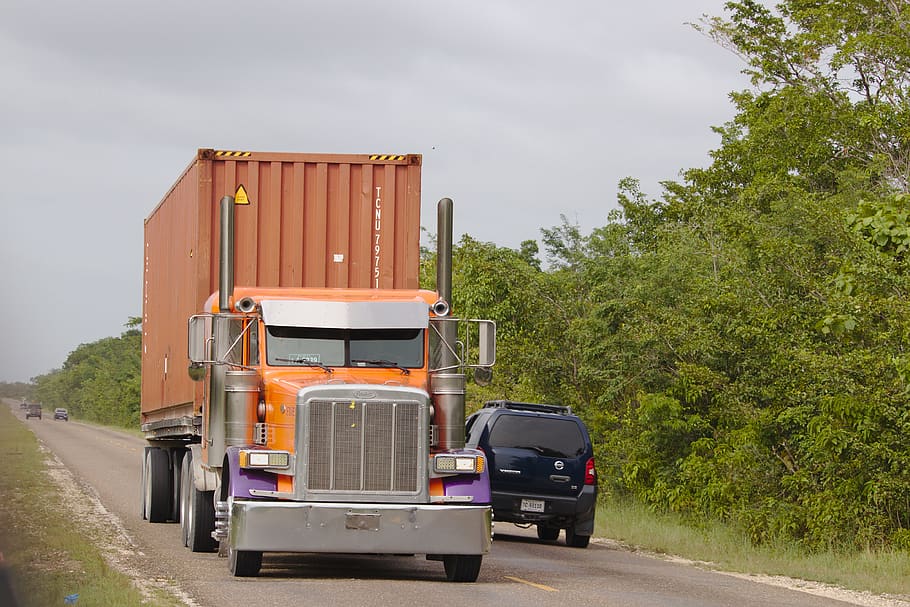 Multivehicle crashes involving motorcycles occur several times each day in Virginia. During 2019, the Department of Motor Vehicles recorded slightly more than 1,600 wrecks that left motorcyclists injured or dead. Many of these collisions were with tractor-trailers and other large commercial trucks on state highways and interstates.
Multivehicle crashes involving motorcycles occur several times each day in Virginia. During 2019, the Department of Motor Vehicles recorded slightly more than 1,600 wrecks that left motorcyclists injured or dead. Many of these collisions were with tractor-trailers and other large commercial trucks on state highways and interstates.
When an 18-wheeler or other big rigs hits a motorcycle, the truck always wins. The size differential is compounded by the fact that a motorcyclist has practically no physical protection against the force of the impact or the effects of being thrown from their bike. A high-quality, properly fitted helmet and protective clothing such as boots and a heavy jacket can save a life, but taking such precautions will not keep bones from breaking or eliminate the possibility of traumatic brain injuries occurring.
LEARN MORE
- Steps to Follow When Filing a Personal Injury Claim After a Motorcycle Crash
- How Fault Is Determined in a Crash Involving a Motorcycle and a Car or Truck
- Motorcycle Crashes Are a Leading Cause of Head and Brain Injuries
Motorcyclists must rely on their own skills and experience to avoid crashes. Drivers also have legally enforceable duties to share the road safely and respectfully with motorcycle riders. Meeting those duties can prove a little more difficult for commercial drivers.
How Crashes Between Large Truck and Motorcycles Happen
The Virginia DMV listed making improper lane changes, following too closely, making improper turns and failing to yield right of way as the top four reasons large truck drivers caused collisions in the state during 2019. All are problems for motorcycle riders for the following reasons.
- Big rig operators have a very hard time seeing motorcyclists. According to the Federal Motor Carrier Safety Administration, which regulates interstate trucking, a standard 18-wheeler has blind spots that extend 20 feet in front of the truck, 30 feet to the rear, half the length of the rig on the driver’s side and two full lanes to the right of the rig. These realities render a lane change, backing maneuver or right turn by the driver of a large truck as much an act of faith as a display of skill behind the wheel.
- Stopping a large truck takes a great deal of distance and time. Anyone who travels I-64, I-95 or I-81 knows that traffic can come to a standstill suddenly. Drivers often have mere seconds to slow from 75 mph to a stop. Semis, tanker trucks and long haulers cannot do that. The Utah Department of Transportation created a great webpage to illustrate the fact that a typical car can come to a stop from highway speeds within 300 feet. A tractor-trailer requires 540 feet (or most of two football fields). So, when a trucker follows too closely, they do not actually need to be all that close.
- Commercial drivers are especially prone to becoming distracted and fatigued. Large truck traffic increases at night because drivers often get paid premiums for completing on-time deliveries. Operating when fewer other vehicles are on the road just makes financial sense. But that interferes with natural sleep cycles, which are already disordered by the long hours drivers put in. Add in the need to keep paper and computer logs, check GPS devices and keep in communication with dispatchers and customers, and you have the very picture of a person who is at risk for taking their eyes and mind off the road ahead, if not fully falling asleep.
None of this information is presented to impugn the professionalism or conscientiousness of large commercial truck drivers. Rather, the work is inherently dangerous to the drivers and others on the road—especially motorcycle riders. The only way to mitigate the dangers is to take extra care and caution. When that does not happen, an injured crash victim has the right to seek compensation via an insurance claim or lawsuit.
EJL